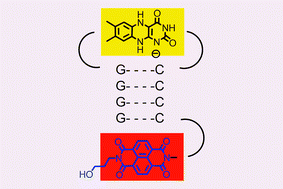Development of donor–acceptor modified DNA hairpins for the investigation of charge hopping kinetics in DNA
Abstract
Investigation of hole or excess electron hopping in DNA is mostly performed based on yield studies, in which an injector modified DNA duplex is irradiated to continuously inject either holes or electrons into the duplex. Observed is a chemical reaction of a “probe” molecule, which can be either one of the two


 Please wait while we load your content...
Please wait while we load your content...